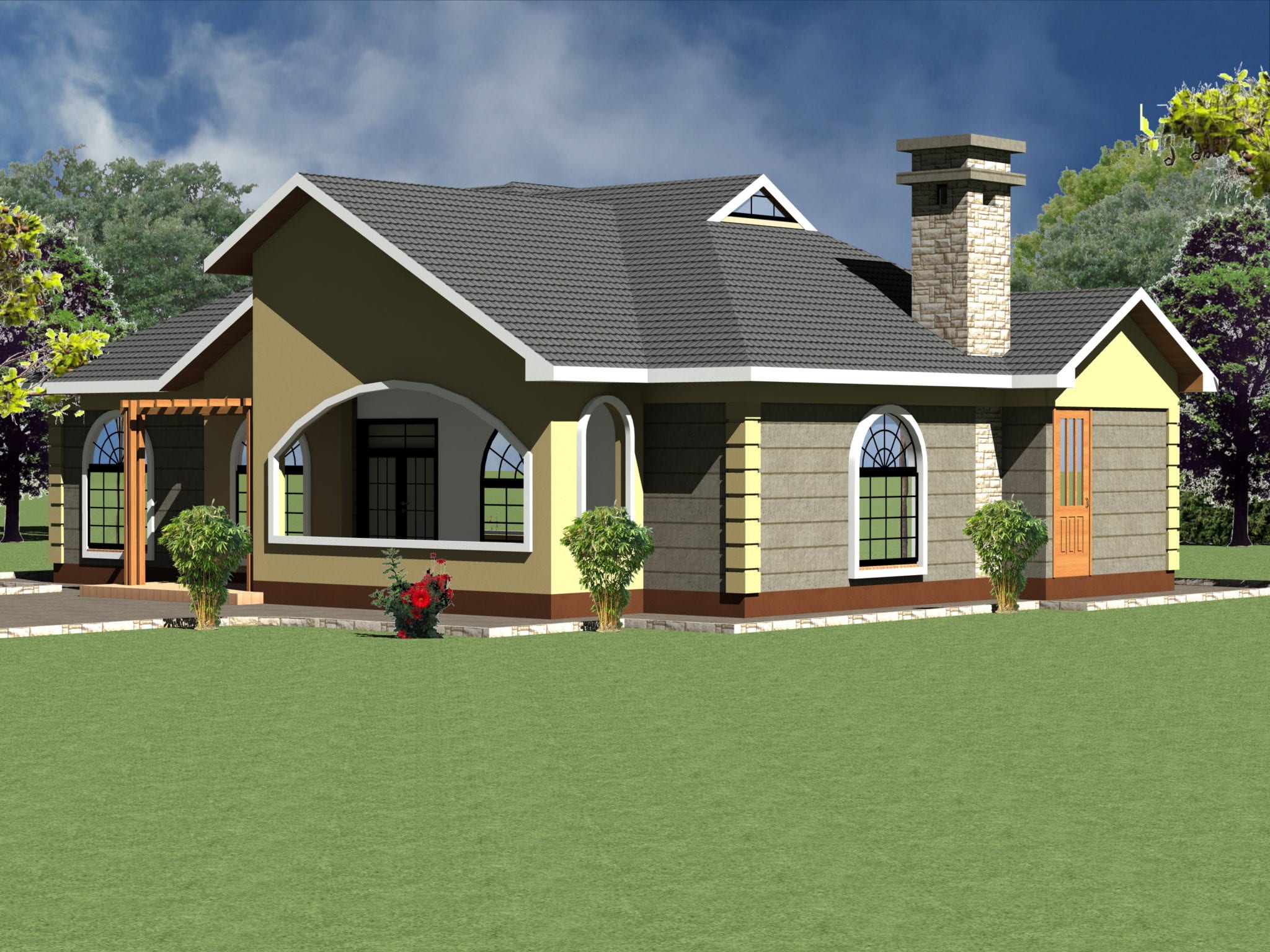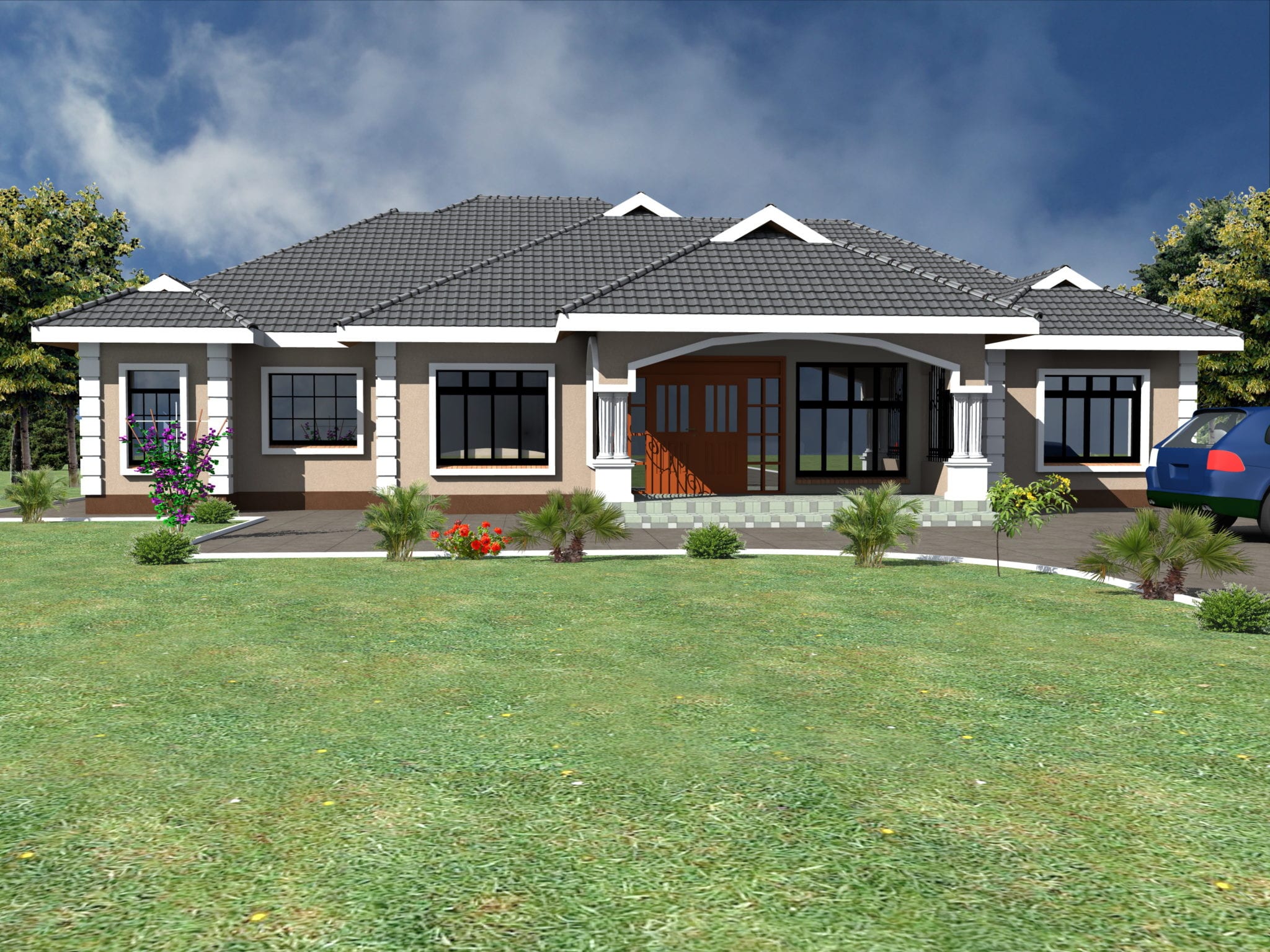Designing for Family Life

A four-bedroom home offers ample space for a family, but designing it to cater to the unique needs of each member requires careful consideration. The dynamics of family life are diverse, encompassing different age groups, personalities, and lifestyles, all of which must be factored into the design process.
Creating Dedicated Spaces
Creating dedicated spaces within a four-bedroom home allows family members to enjoy their own personal areas while fostering a sense of togetherness.
- For children, a dedicated playroom provides a safe and stimulating environment for imaginative play and creative exploration. This space should be filled with age-appropriate furniture, toys, and storage solutions to keep the area organized and accessible.
- Teenagers require a space that reflects their growing independence and evolving interests. A dedicated teen room can serve as a study area, a hangout spot for friends, or a creative outlet for hobbies. Providing ample storage, a comfortable desk, and a stylish design that appeals to their tastes can help create a welcoming and functional space.
- Adults need a sanctuary where they can relax and recharge. A dedicated home office, a cozy reading nook, or a spacious master suite with a luxurious bathroom can provide the necessary tranquility and privacy. These spaces should be designed with comfort, functionality, and aesthetics in mind, catering to the individual needs and preferences of each adult family member.
Optimizing Space Utilization and Traffic Flow
A well-designed floor plan maximizes space utilization and ensures smooth traffic flow, especially in a busy family home.
- Open-concept living areas can create a sense of spaciousness and facilitate family interaction. This design approach combines the kitchen, dining room, and living room into one large space, allowing for easy movement and shared experiences.
- Strategic placement of furniture and appliances can optimize space utilization. For example, incorporating built-in storage solutions, utilizing corner spaces effectively, and selecting multi-functional furniture can help maximize available space.
- Clearly defined pathways and traffic flow are crucial for a functional family home. Avoid placing furniture in high-traffic areas, and consider using different floor coverings to visually separate different zones within the house.
Architectural Styles for 4-Bedroom Homes: 4 Bedroom Architectural Design

Designing a 4-bedroom home involves considering the architectural style that best suits your family’s needs and preferences. Each style offers a unique blend of functionality, aesthetics, and budget considerations. Exploring popular architectural styles can help you visualize the home of your dreams and make informed decisions during the design process.
Contemporary Style
Contemporary homes are characterized by clean lines, open floor plans, and a focus on natural light. They often feature large windows, minimalist details, and a connection to the outdoors.
- Key Characteristics:
- Clean lines and simple forms
- Open floor plans with a focus on flow and connectivity
- Large windows and natural light
- Use of modern materials like steel, glass, and concrete
- Flat roofs or low-pitched roofs
- Design Elements:
- Geometric shapes and patterns
- Minimalist décor and furnishings
- Built-in storage and shelving
- Outdoor living spaces integrated with the interior
- Advantages:
- Modern and stylish aesthetic
- Open and spacious interiors
- Abundant natural light
- Energy efficiency with large windows and sustainable materials
- Disadvantages:
- Can be expensive to build due to the use of modern materials
- May require more maintenance than traditional styles
- May not be suitable for all climates
Traditional Style
Traditional homes evoke a sense of warmth, comfort, and history. They often feature symmetrical facades, decorative details, and a focus on craftsmanship.
- Key Characteristics:
- Symmetrical facades with a central entryway
- Gable roofs with dormers and chimneys
- Use of traditional materials like brick, stone, and wood
- Decorative details like columns, cornices, and moldings
- Design Elements:
- Formal living and dining rooms
- Fireplaces and built-in bookcases
- Detailed trim and crown molding
- Traditional furnishings and décor
- Advantages:
- Timeless and elegant aesthetic
- Durable construction with high-quality materials
- Comfortable and inviting atmosphere
- Resale value tends to be high
- Disadvantages:
- Can be more expensive to build than contemporary styles
- May not be as energy-efficient as modern homes
- Can feel formal and less flexible in terms of layout
Farmhouse Style
Farmhouse homes offer a rustic charm and a connection to nature. They are often characterized by simple forms, open floor plans, and a focus on natural materials.
- Key Characteristics:
- Simple, symmetrical facades with a focus on functionality
- Gable roofs with large overhangs
- Use of natural materials like wood, stone, and brick
- Open floor plans with a focus on gathering spaces
- Design Elements:
- Large kitchens with farmhouse sinks and butcher block countertops
- Porches and verandahs for outdoor living
- Rustic décor and furnishings
- Fireplaces and exposed beams
- Advantages:
- Warm and inviting atmosphere
- Open and spacious interiors
- Durable construction with natural materials
- Relatively affordable to build compared to other styles
- Disadvantages:
- May not be as energy-efficient as modern homes
- Can be difficult to maintain the rustic aesthetic
- May not be suitable for all climates
Modern Style
Modern homes emphasize clean lines, geometric shapes, and a focus on functionality. They often feature flat roofs, large windows, and a connection to the outdoors.
- Key Characteristics:
- Geometric shapes and simple forms
- Open floor plans with a focus on flow and connectivity
- Flat roofs or low-pitched roofs
- Use of modern materials like steel, glass, and concrete
- Minimalist details and ornamentation
- Design Elements:
- Large windows and natural light
- Outdoor living spaces integrated with the interior
- Built-in storage and shelving
- Modern furnishings and décor
- Advantages:
- Modern and stylish aesthetic
- Open and spacious interiors
- Energy efficiency with large windows and sustainable materials
- Flexibility in layout and design
- Disadvantages:
- Can be expensive to build due to the use of modern materials
- May require more maintenance than traditional styles
- May not be suitable for all climates
Maximizing Space and Functionality

In the realm of four-bedroom homes, maximizing space and functionality is paramount, especially when catering to the diverse needs of a growing family. An intelligent design approach can transform a house into a haven of comfort and efficiency, seamlessly blending practicality with aesthetic appeal.
Open-Concept Living Areas, 4 bedroom architectural design
Open-concept living areas are a cornerstone of modern home design, fostering a sense of spaciousness and connectivity. By eliminating walls between the living room, dining room, and kitchen, a sense of flow and openness is achieved, creating a dynamic and inviting space.
- Maximizing Natural Light: Large windows and skylights are crucial for flooding the open-concept space with natural light, creating a bright and airy ambiance. strategically placed windows to maximize natural light penetration and create a vibrant and inviting atmosphere.
- Creating a Sense of Spaciousness: Open-concept design not only visually expands the space but also facilitates seamless movement and interaction among family members. This layout encourages togetherness and creates a more dynamic living environment.
- Flexible Layout: Open-concept living areas offer flexibility, allowing for adaptable furniture arrangements to suit different activities, such as hosting gatherings, enjoying family meals, or simply relaxing.
Innovative Storage Solutions
Storage solutions are essential for maintaining a clutter-free and organized living space. By incorporating innovative storage solutions, you can maximize space utilization in bedrooms, closets, and other areas, ensuring a streamlined and functional environment.
- Built-in Closets: Built-in closets provide a tailored and efficient storage solution, maximizing vertical space and creating a clean, organized look. They are particularly beneficial in bedrooms, maximizing storage capacity and reducing clutter.
- Under-bed Storage: Utilize the space beneath beds by incorporating drawers, lift-up platforms, or storage containers. This solution maximizes vertical space and keeps items neatly tucked away.
- Wall-Mounted Shelving: Wall-mounted shelving offers a space-saving alternative to traditional cabinets, especially in small spaces. This solution maximizes vertical space and creates a minimalist aesthetic.
- Multi-functional Furniture: Invest in multi-functional furniture pieces, such as a sofa bed or a coffee table with storage compartments. This maximizes space utilization and adds versatility to the living area.
Multi-functional Spaces
Multi-functional spaces are essential for maximizing the functionality of a four-bedroom home, allowing for adaptability and flexibility to meet the evolving needs of a family.
- Home Office/Guest Room: A home office that doubles as a guest room offers a practical solution for space-constrained homes. By incorporating a fold-down bed or a Murphy bed, a functional workspace can be transformed into a comfortable sleeping area when needed.
- Playroom/Home Theater: A playroom that transforms into a home theater provides a space for both children’s entertainment and family movie nights. By incorporating a projector, a pull-down screen, and comfortable seating, the space can be easily converted for both purposes.
- Mudroom/Laundry Room: A mudroom that doubles as a laundry room provides a dedicated space for managing entryway clutter and laundry tasks. This multi-functional space streamlines daily routines and keeps the house organized.
